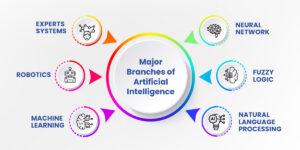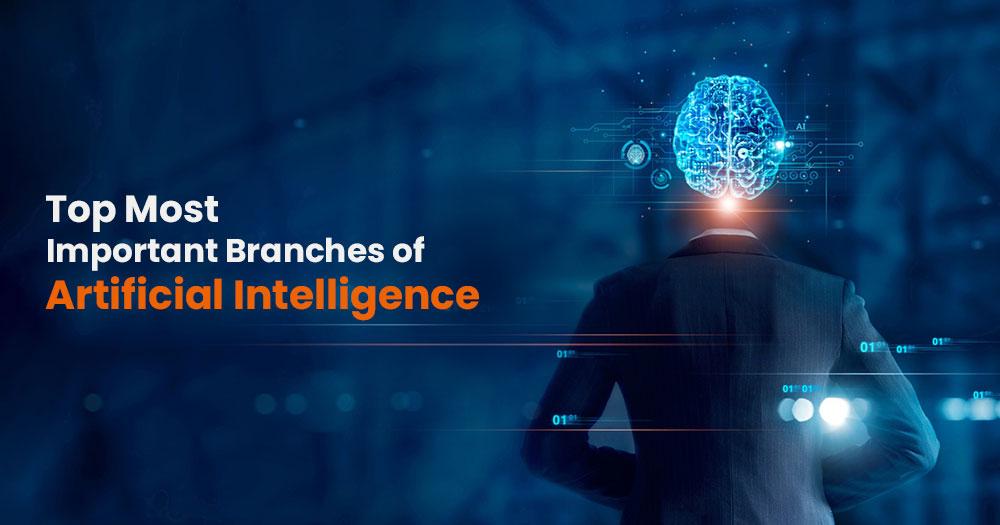What is Artificial Intelligence?
Artificial Intelligence (AI) is the science of designing systems that exhibit the same features associated with the intelligence found in human behaviour and Branches of Artificial Intelligence. It is an aspect of computer science that deals with system recognition, such as learning, reasoning, understanding language, and taking action to solve issues.
Uses of Artificial Intelligence (AI)
Here is the list of uses of AI in various fields-

Astronomy
Artificial Intelligence can be beneficial for solving complex universal problems. AI technology can help us understand the universe, such as its workings, origin, etc.
Healthcare
In the last few years, AI has become more beneficial for the healthcare industry and will substantially impact this industry.
Healthcare Industries are applied to AI to create a better and faster diagnoses than humans. AI can assist doctors with diagnoses and be informed when patients are worsening so that medical help can reach the patient before hospitalization.
You may also like to read: Application of blockchain in the Healthcare sector
Gaming
can use AI for the gaming industry. The AI machines can play strategic games like chess, where the machine needs to think of many possible places.
Finance
AI and finance industries are the perfect matches for each other. The finance industry is implementing automation, chatbot, adaptive intelligence, algorithm trading, and machine learning monetary processes.
Data Security
Data security is essential for each company, and cyber-attacks are multiplying in the digital world. c can use AI to create your data more safely and securely. Some examples, such as the AEG bot, and AI2 Platform, are used for determining software bugs and cyber-attacks in a better way.
Social Media
Social Media sites such as Facebook, Twitter, and Snapchat have billions of user profiles, which must be stored and managed effectively. AI can be organizing and managing huge amounts of data.can analyze AI loads of data to identify the latest trends, hashtags, and requirements of different users.
Travel & Transport
AI is becoming highly demanding for travel industries. AI can do multiple travel-related works, from making travel arrangements to suggesting the hotels, flights, and best routes to the customers. Travel industries are using AI-powered chatbots, which can create human-like interactions with customers for better and more rapid responses.
Automotive Industry
Some Automotive industries are using AI to give virtual assistants to their users for better performance. Such as, Tesla has introduced TeslaBot, at virtual assistant.
Multiple industries are currently working to develop self-driven cars that can make your journey safer and more secure.
Robotics
Artificial Intelligence in Robotics has a remarkable role. Usually, robots are programmed such that they can be performing some repetitive tasks. Still, with the help of AI, we can make intelligent robots that can perform tasks with their own experiences without being pre-programmed.
Humanoid Robots are the excellent examples of AI in robotics. An intelligent Humanoid robot named Erica and Sophia has been developed, which can talk and respond like humans.
Entertainment
We are recently using AI-based applications in our daily life with some entertainment services such as Netflix or Amazon. With the help of ML/AI algorithms, these services show the recommendations for programs and shows.
You may also like to read: An Introduction To Deep Learning – its types, application & Algorithms.
Major Branches of Artificial Intelligence
Here is the list of major Branches of Artificial Intelligence;

- Experts Systems
- Robotics
- Machine Learning
- Neural Network
- Fuzzy Logic
- Natural Language Processing
Expert Systems:
Expert Systems is an Artificial Intelligence (AI-based) system that learns and mimics a human’s decision-making ability.
Expert Systems does not use conventional programming for solving complex problems but instead use logical notations for achieving such a goal.
It is mainly used in the medical field for operating medical facilities and detecting virus infections. It is also used in the banking sector for loan and investment purposes.
Robotics:
This exciting and popular Branches of Artificial Intelligence focuses on designing and developing robots. Robotics deals with robot design, construction, and operation by incorporating science and engineering methodologies.
The goal of deploying robots is to assist humans with tedious and bulky tasks. These tasks include controlling computer systems, information transformation, and manufacturing automobiles. NASA uses it for moving heavy objects in space.
Robots also act as artificial intelligence agents that perform tasks in a real-world environment to actualize results. This branch of AI is excellent.
Machine Learning:
Machine Learning is a high demanding kind of Artificial Intelligence. It is the science that allows machines and computer systems to process, analyze, and interpret data to provide solutions for real-life challenges.
Computer systems can learn and take actions on their own because of the level of enough data provided through Machine Learning. The algorithm is set up so machines can predict results based on past occurrences.
Machine Learning algorithms and methodology help train a model with presented data, which will predict and adjust to future outcomes. It is the science of enabling computer systems to learn and translate data for task execution without programming. Technology discoveries such as web search, speech recognition, and automatic vehicles are the outcome of Machine Learning.
Here are three major types of AI in machine learning are – ;
- Supervised Learning
- Unsupervised Learning
- Reinforcement Learning
Neural Network:
Neural Network is a branch of Artificial Intelligence connected with the use of Neurology for incorporating cognitive science in helping computer systems and machines to execute tasks. It is known as “Deep Learning” because it uses artificial brain neurons to solve complex problems.
Neural Network assists the machines process how the human brain operates. This type of AI also includes implementing mathematical functions and statistical techniques for solving real-world problems. It is used in risk analysis, market research, fraud detection, and stock exchange prediction.
Face verification algorithms on social media sites are an outcome of the implementation of Neural Networks. This excellent branch of AI is also responsible for virtual assistant apps such as “Alexa and Siri.”
Fuzzy Logic:
This Branches of Artificial Intelligence is the technique to modify and represent uncertain information by analyzing the degree to which the hypothesis is true. Fuzzy Logic offers a certain level of reasoning flexibility when faced with uncertainties.
This sounds tough, but it is simply a case of using standard Logic to determine if a concept exhibits a degree of truth. For instance, standard Logic is 1.0 if a concept is RIGHT and 0.0 if a concept is WRONG. However, there are cases where a concept can either be partially correct or partially wrong.
Just as humans face dilemmas in their day-to-day activities, c can create a computer system to experience such to find a solution. Fuzzy Logic is used in automatic gearboxes and medicine to make decisions.
Natural Language Processing:
Communicating with someone who doesn’t understand your language can be very challenging, and the same can be said of humans trying to connect with a computer system. A computer will find it tough to interpret words because it only understands the language of binary digits. This challenge have been led to the development of Natural Language Processing in the field of computer science.
This is creating computer systems and machines for understanding fundamental human interactions. This methodology involves a machine receiving human sound from interaction and converting it to text format to be easily read and understood. These texts are then converted to components by the computer system that will make it understand the primary intention of the human.


